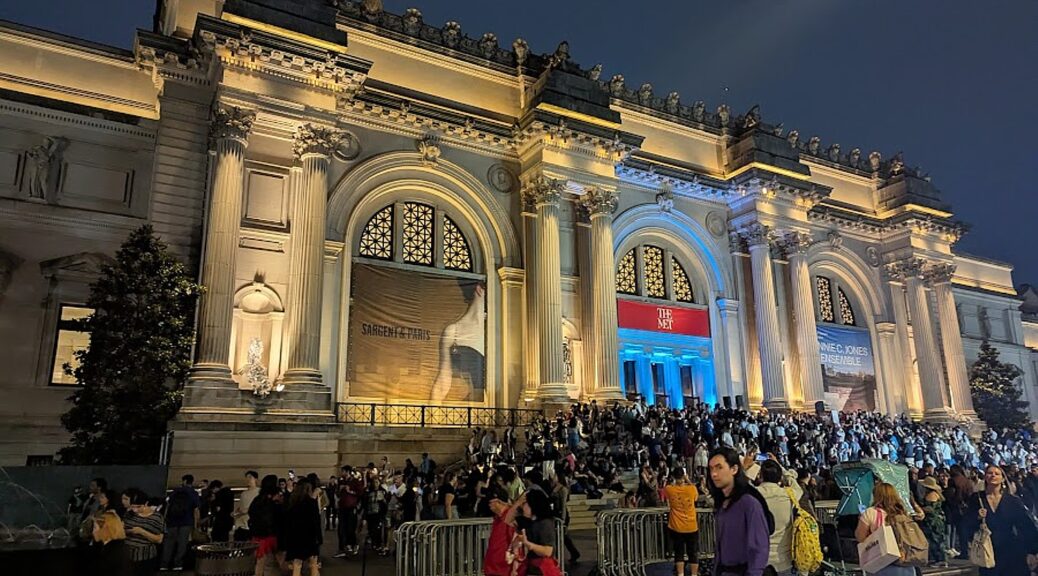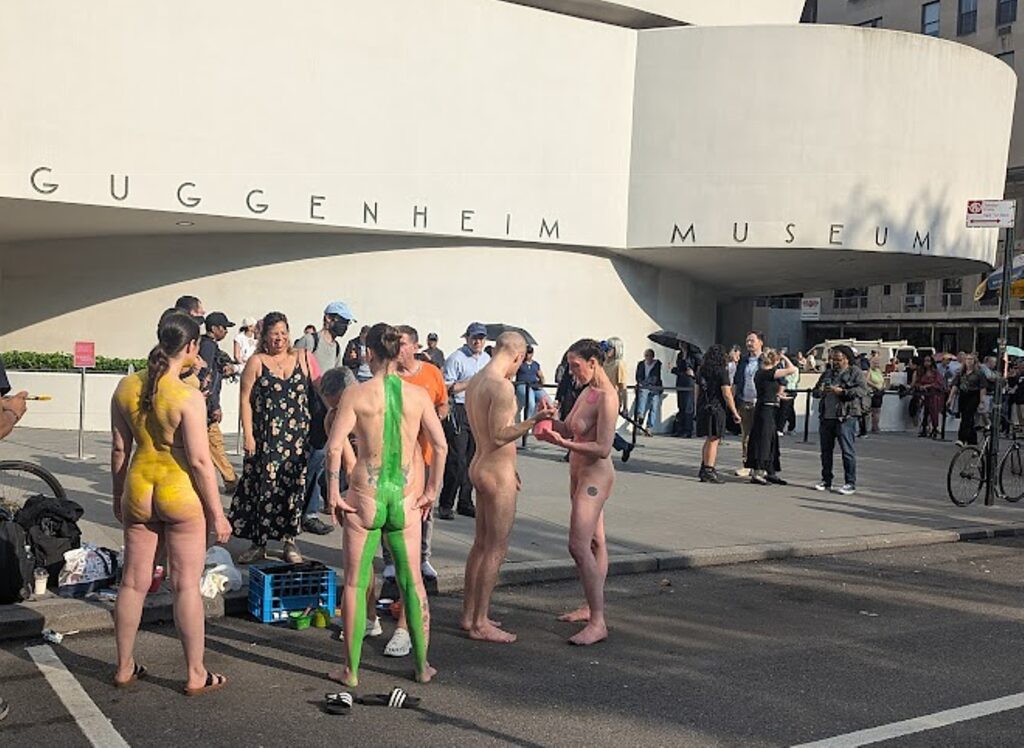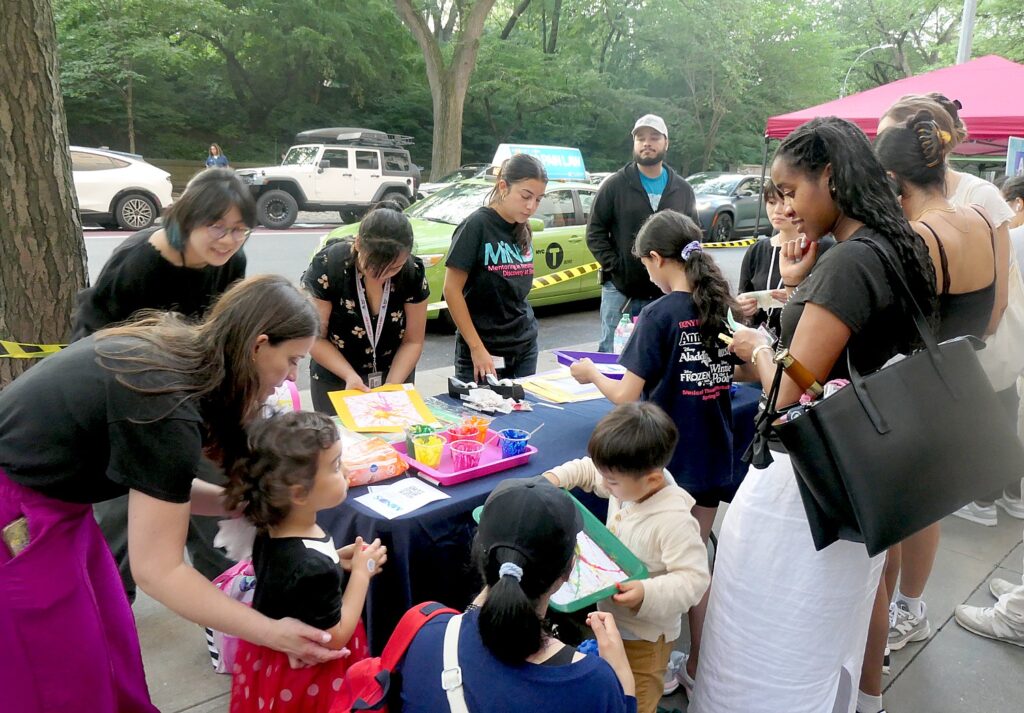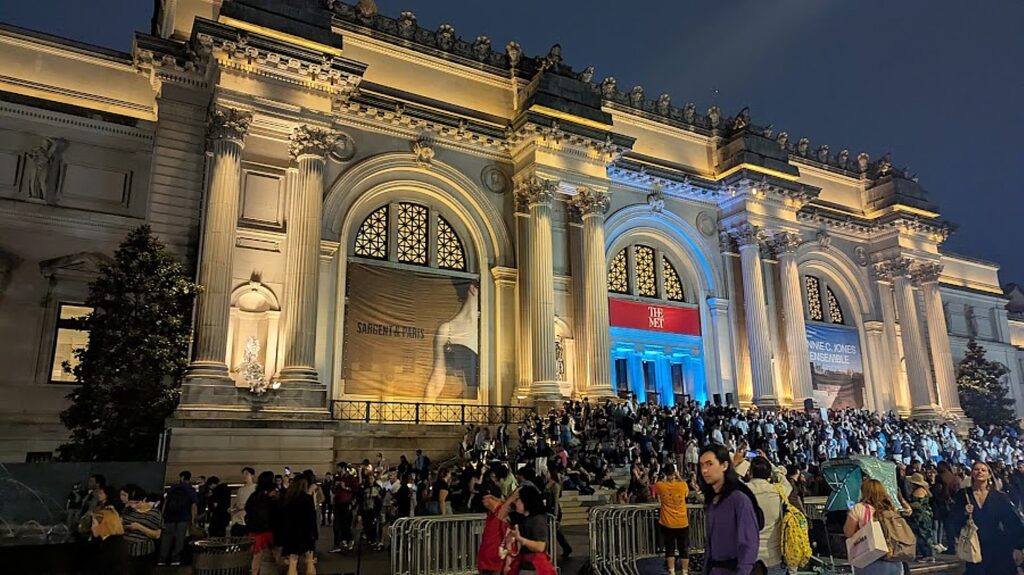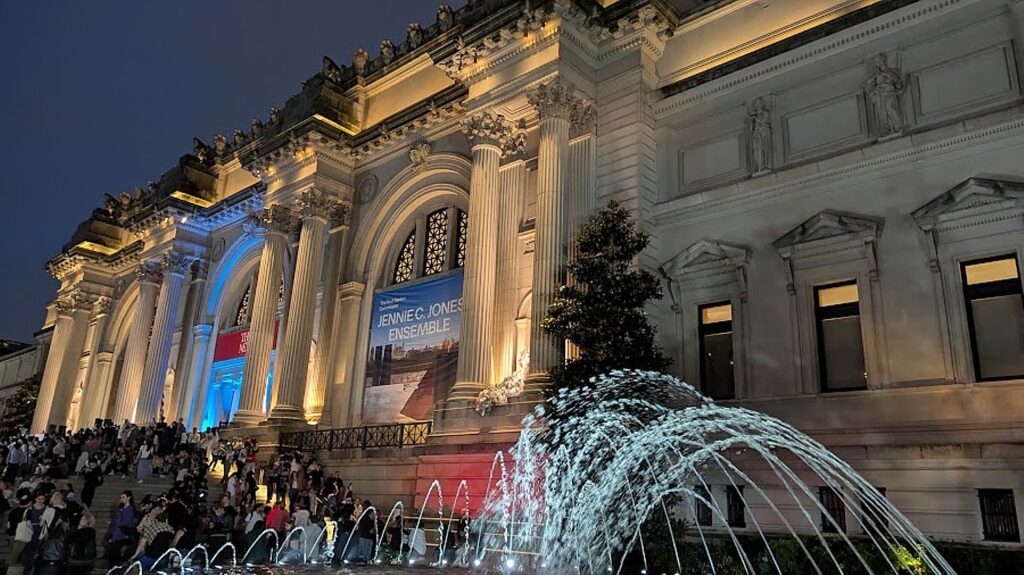
By Karen Rubin, Travel Features Syndicate, goingplacesfarandnear.com
One of my favorite events of Summer in the City is the annual Museum Mile Festival, when eight of New York City’s finest cultural institutions throw open their doors, and the Avenue becomes one big block party.
It’s so popular, that it is best to plan ahead. I did have a plan, which I wound up throwing out the door, and letting serendipity take hold.
Insider tip: Come early and start at the Met Museum (NYS residents pay what they wish). It wasn’t my original plan, but I found that I was at the Museum at around 4:30 pm, knowing it would close at 5 pm and reopen at 6 when the festival began. Instead of spending the half hour walking up to 103rd, and being there an hour before that museum opened for the festival,

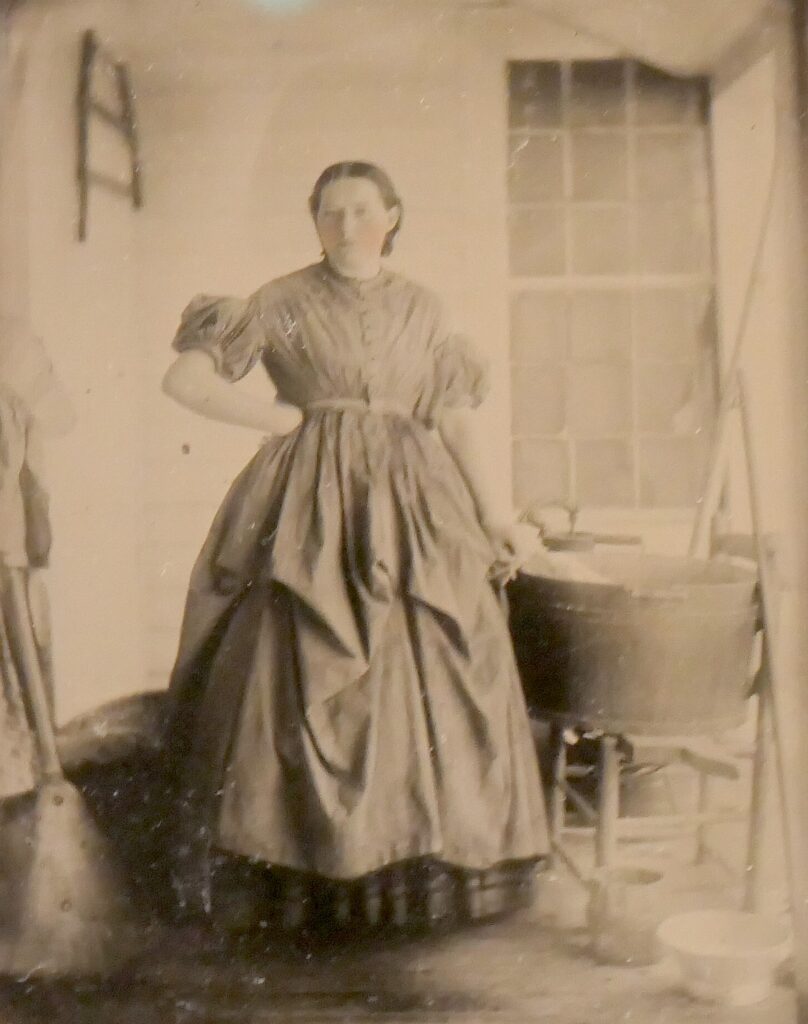

I decided to see the Met’s “The New Art: American Photography, 1839–1910” (on through July 20). This exhibit offers a fascinating examination into the beginnings of photography and its relation to society and culture, through its various technology incarnations (daguerreotypes, tintypes, etc), made even more interesting by the notes about the subjects or photographer or why the photograph was so notable.
But then, when they closed the museum, I was told we could stay in the sections that would be open for the festival. It was incredible to wander through halls – the Egyptian rooms and Temple of Dendur, with just a few people – the quiet was extraordinary. Unfortunately, I was not able to see the Sargent and Paris exhibit (was not open for the festival), which explores the early career of American painter John Singer Sargent “from his arrival in Paris in 1874 as a precocious 18-year-old art student through the mid-1880s, when his infamous portrait Madame X was a scandalous success at the Paris Salon.” (Through Aug. 3). See https://www.metmuseum.org/.
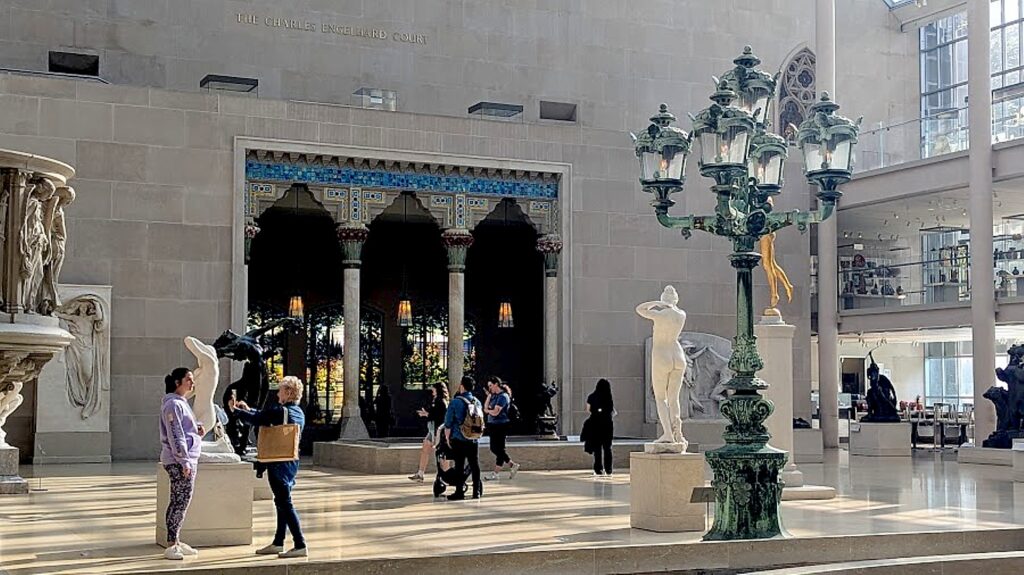
I get time alone with a few of my favorites at the Met, the Tiffany fountain and windows in the American Wing.
By the time I left the Met with a plan to walk the Museum Mile up to 103rd and start at the Museum of the City of New York (always one of my favorites), the band had already started playing on the Met’s grand staircase and the festival was just beginning to get underway.
I pass the Guggenheim Museum at 89th St., where the “street art” activity is a group of body painters – literally, they are painting each other’s nude bodies. What is amazing is that while drawing a crowd of onlookers, it isn’t really gawking, but artistic appreciation – kind of evocative of Gaugin.
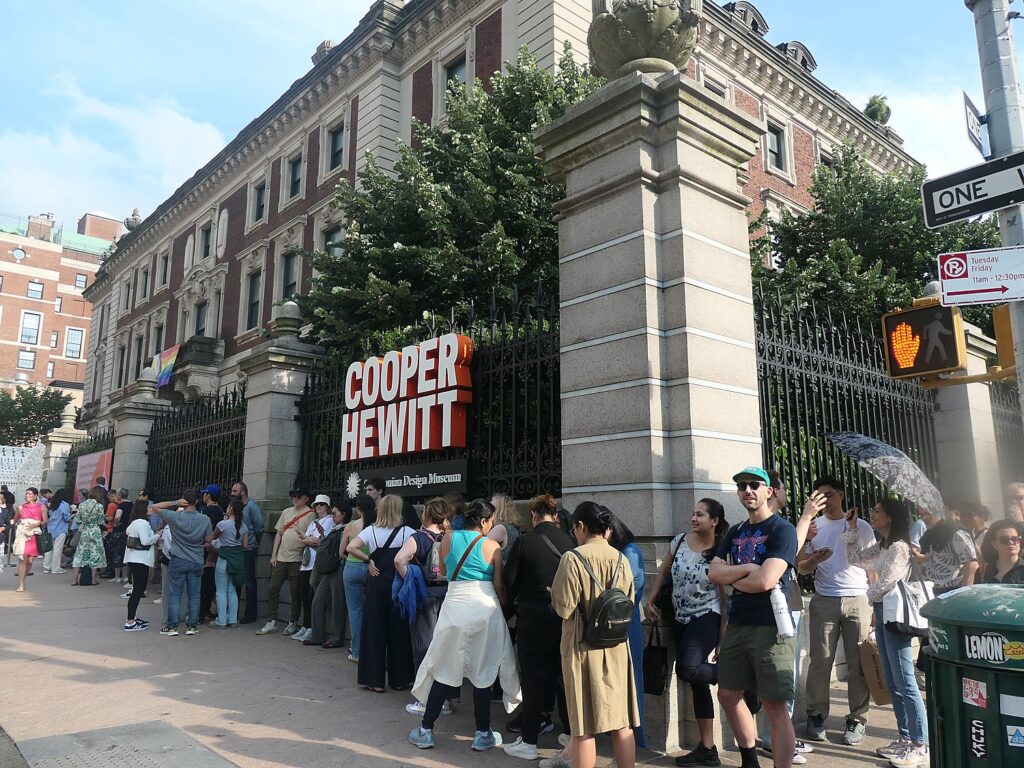
People are already lined up at the Neue Galerie New York at 86th and at Cooper Hewitt, Smithsonian Design Museum at 91st.
Further on, I spot a banner announcing the exhibit at the Jewish Museum, “The Book of Esther in the Age of Rembrandt,” and was beyond intrigued. It is just 6 pm with the doors just opening when I get in. The exhibit is breathtaking – showing how the story of Queen Esther resonated with the Dutch in this time, who heralded her as a hero of their own independence from Spain (after an 80-year war), and how the story of how she saved the Jews from annihilation pervaded Dutch culture.
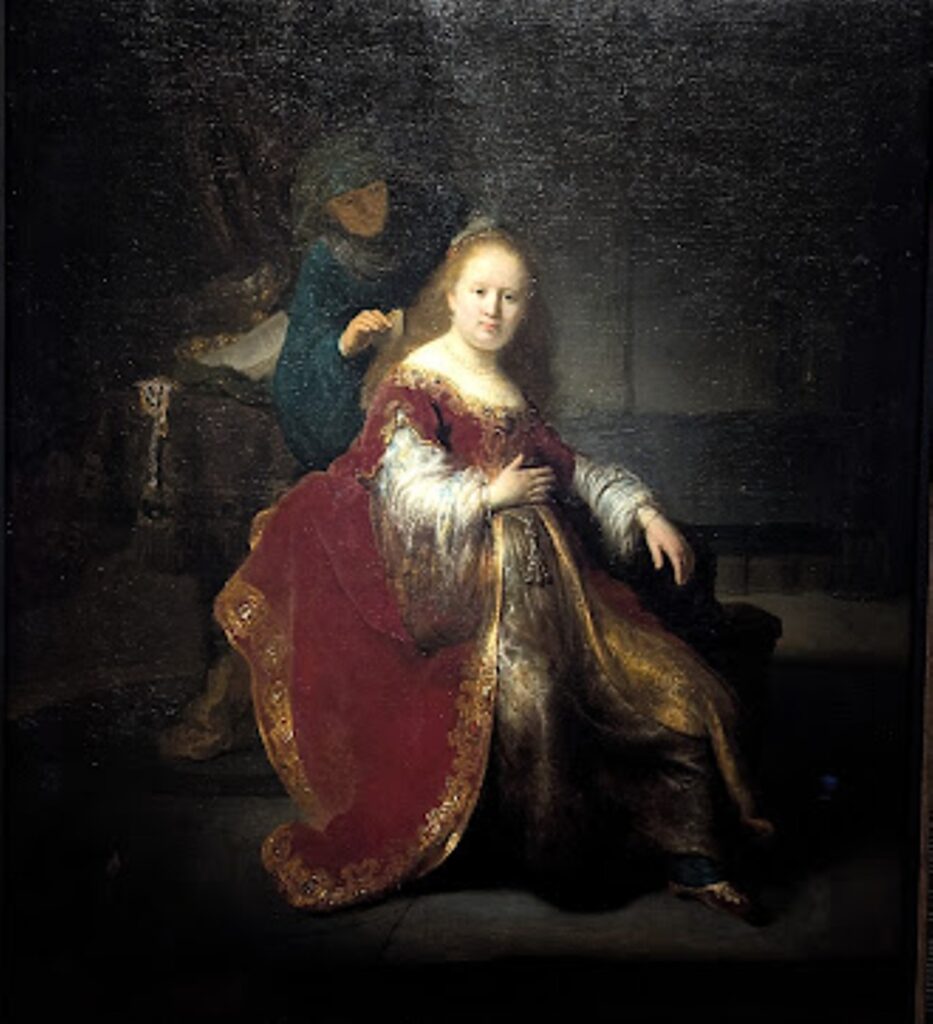

There are stunning paintings by Rembrandt and his contemporaries depicting Esther – even more fascinating because during this period, the Netherlands had begun their Golden Age of Sail and were trading with the Mideast, so the paintings depict genuine objects, though mixed into a Dutch context. I was reminded that Netherlands, after winning independence from Catholic Spain instituted religious freedom and many Jews escaping the Inquisition in Spain and Portugal settled there. The notes are excellent, but you can also download a digital guide transcript.
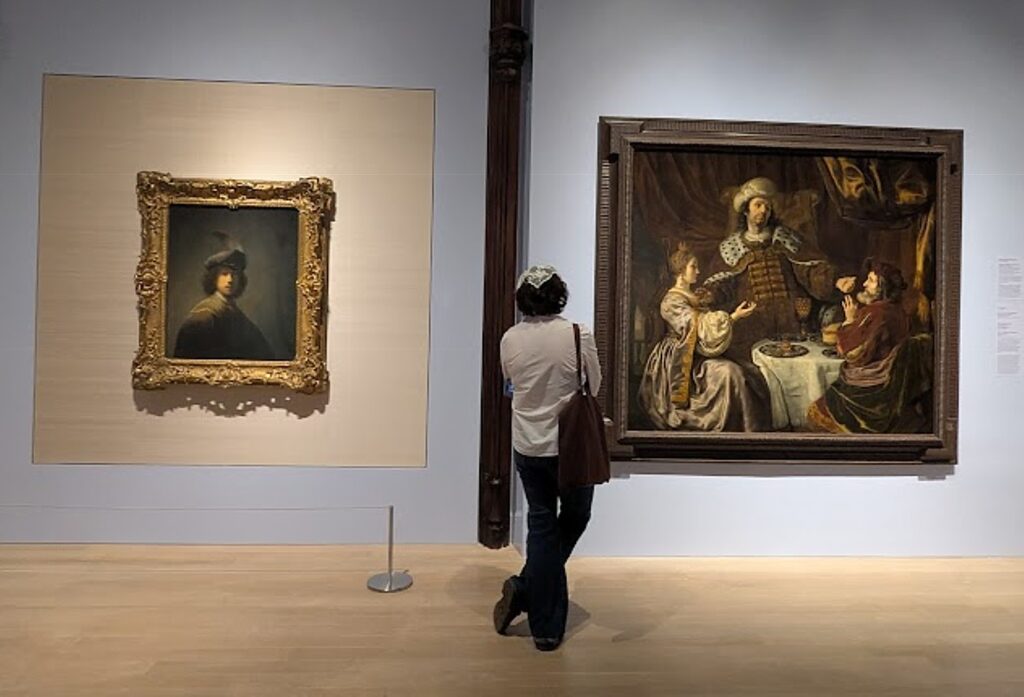
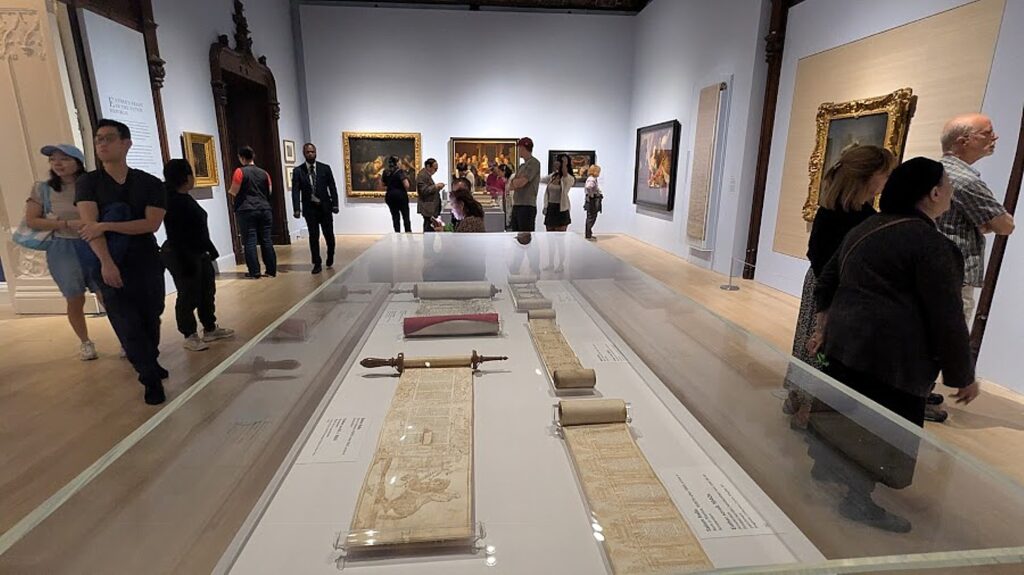
“Widely read in the 17th century, the Book of Esther offered a dramatic biblical subject for Dutch artists. The Dutch interpreted the story of Esther’s bravery as a symbol of the Netherlands’ newly won independence from Spain. Rembrandt was part of a larger cultural trend that reimagined this story for the new century, new secular art market, and new national purpose. Rembrandt’s naturalistic approach to biblical paintings and his talent for capturing human emotion made Esther highly accessible to his audience,” write Abigail Rapoport, curator of Judaica Jewish Museum, and Michele Frederick, curator of European Art, North Carolina museum of Art, Raleigh.
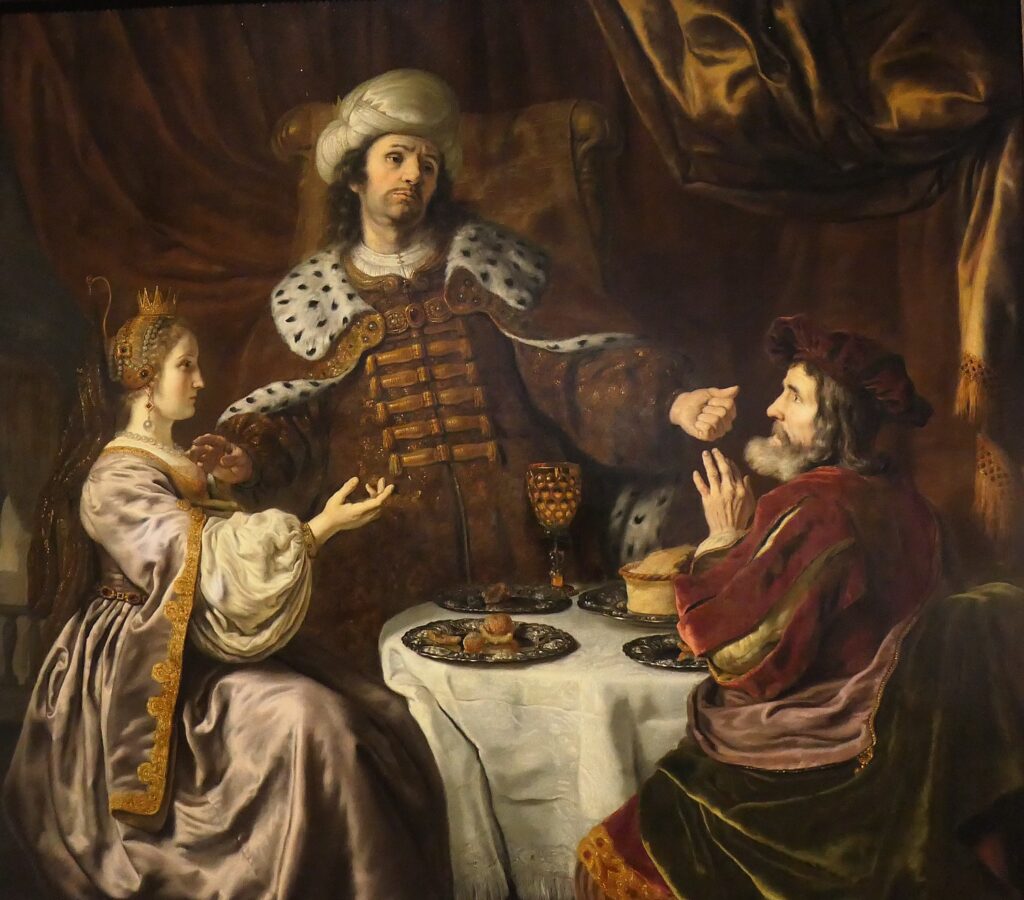
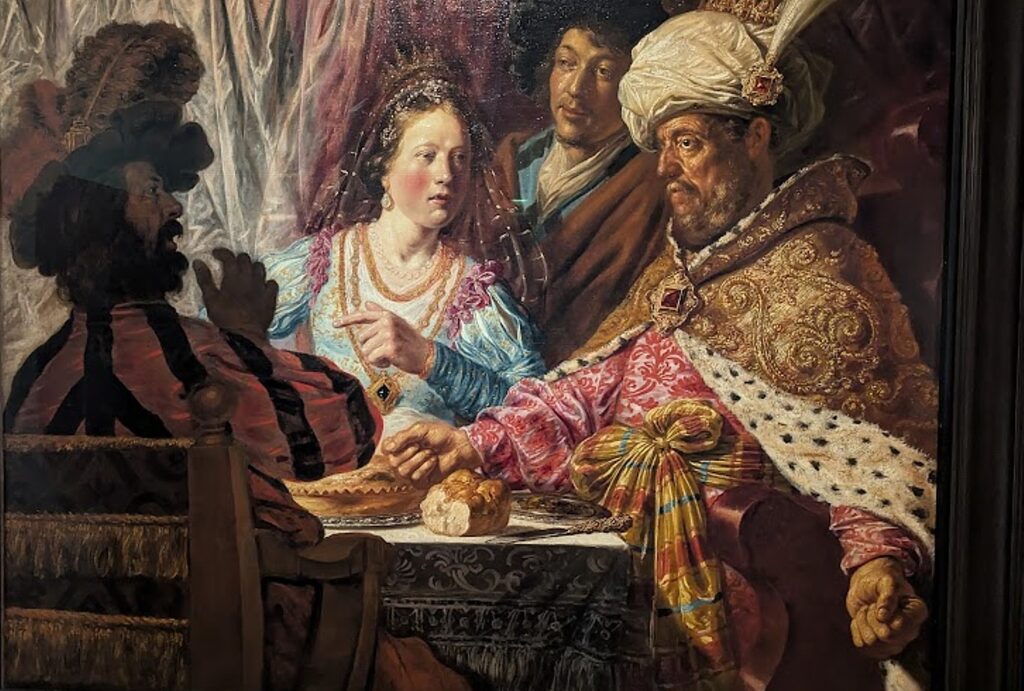
“Against this backdrop, Rembrandt and his contemporaries expressed Esther’s story in paintings, prints, drawings, objects for the home, Jewish ceremonial art, and theater. Presenting works that range form portraits of queen Esther to prim plays, this exhibition illuminates the Book of Esther’s meaning in Rembrandt’s time and for generations to follow,” Abigail Rapoport, curator of Judaica Jewish Museum, and Michele Frederick, curator of European Art, North Carolina museum of Art, Raleigh.” (On view through Aug. 10)
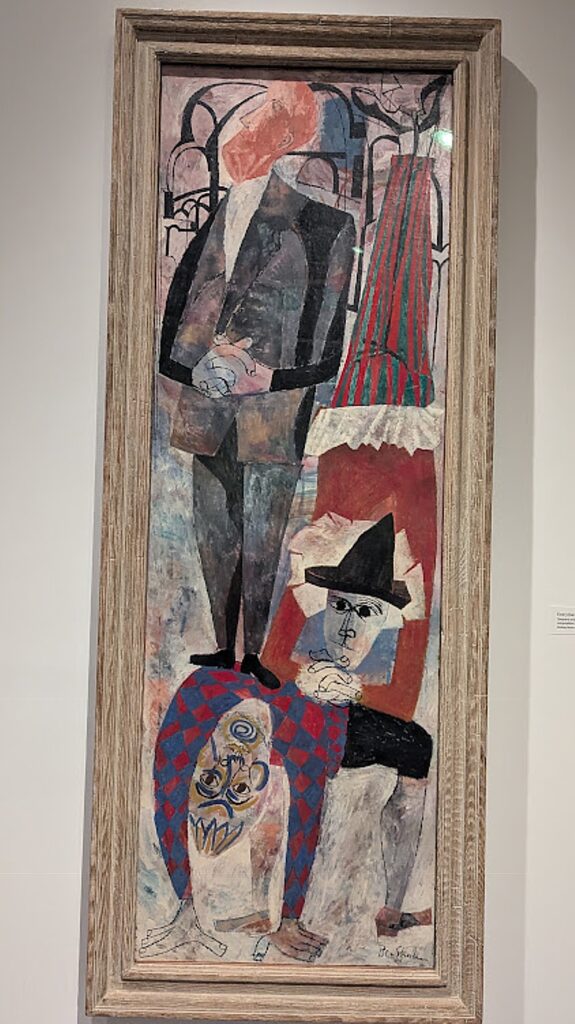
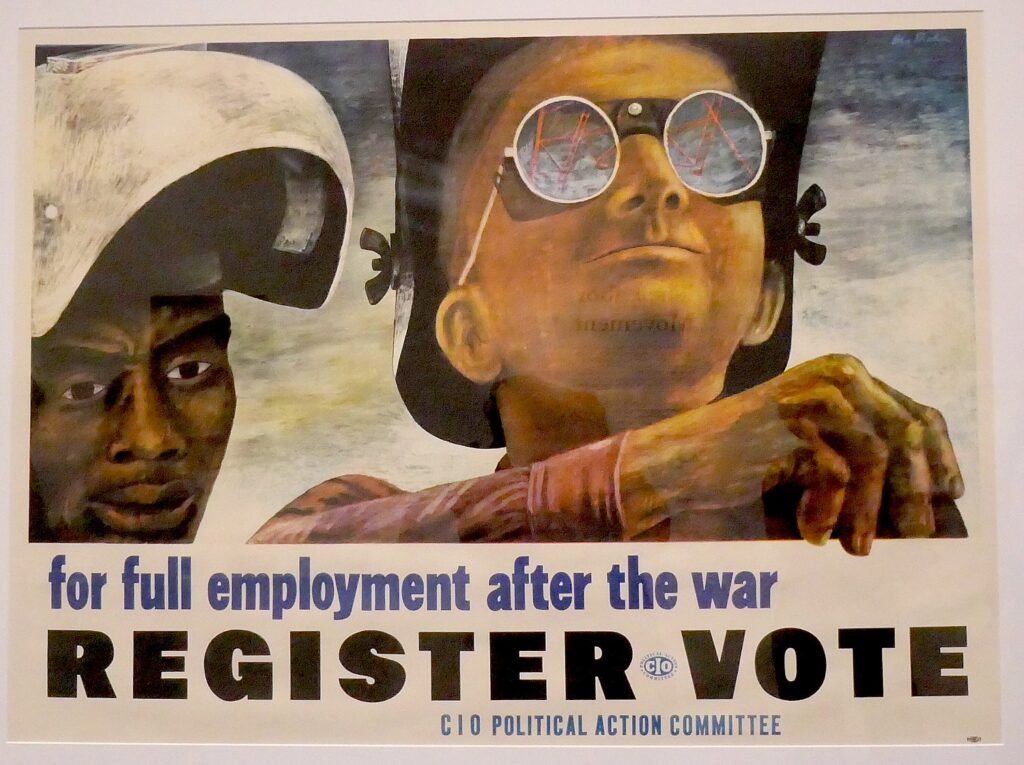
The icing on the cake at the Jewish Museum is another spectacular exhibit: Ben Shahn, On Nonconformity, who used his art for social justice in ways that are unnervingly relevant today. The 175 artworks and objects form the 1930s to the 1960s show how this prolific and progressive artist chronicled and confronted crucial issues from the Great Depression to the Vietnam War, to Civil Rights and Workers Rights. “The exhibition draws its title from Ben Shahn’s credo of “nonconformity,” which the artist asserted as an indispensable precondition for both significant artistic production and all great societal change.” (On view through Oct. 12).
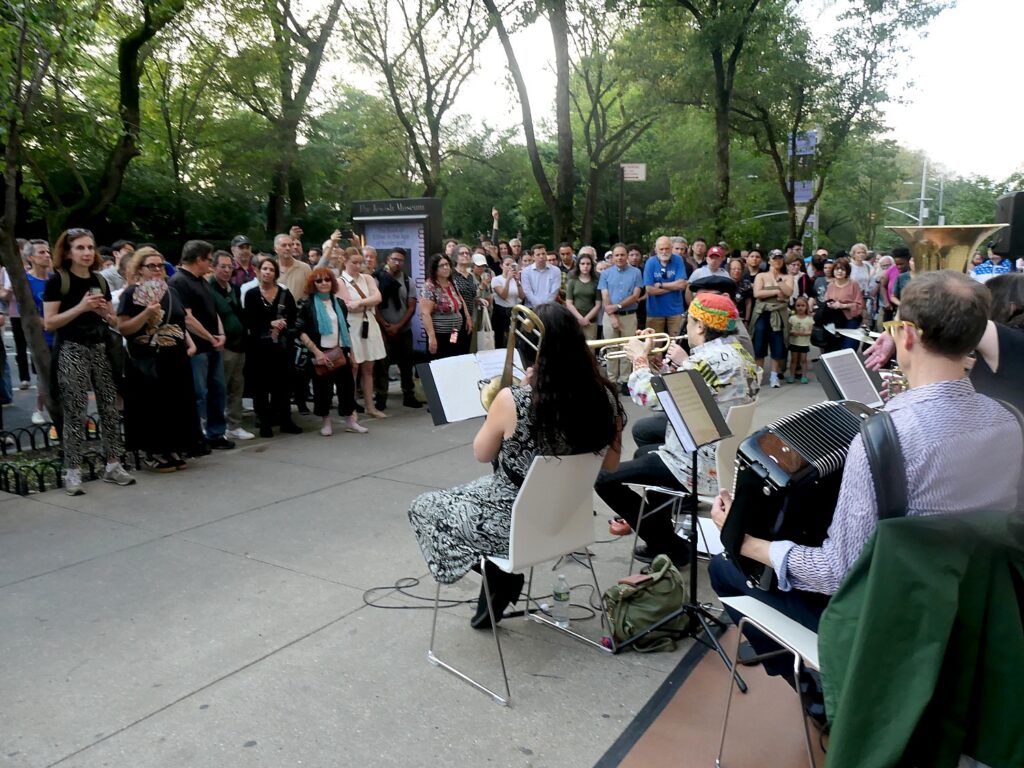
The Jewish Museum also traditionally offers a fantastic klezmer band outside, entertaining the people waiting on line.
(Jewish Museum, 1109 5th Ave &, E 92nd St, thejewishmuseum.org, (212) 423-3200; free admission on Saturday)
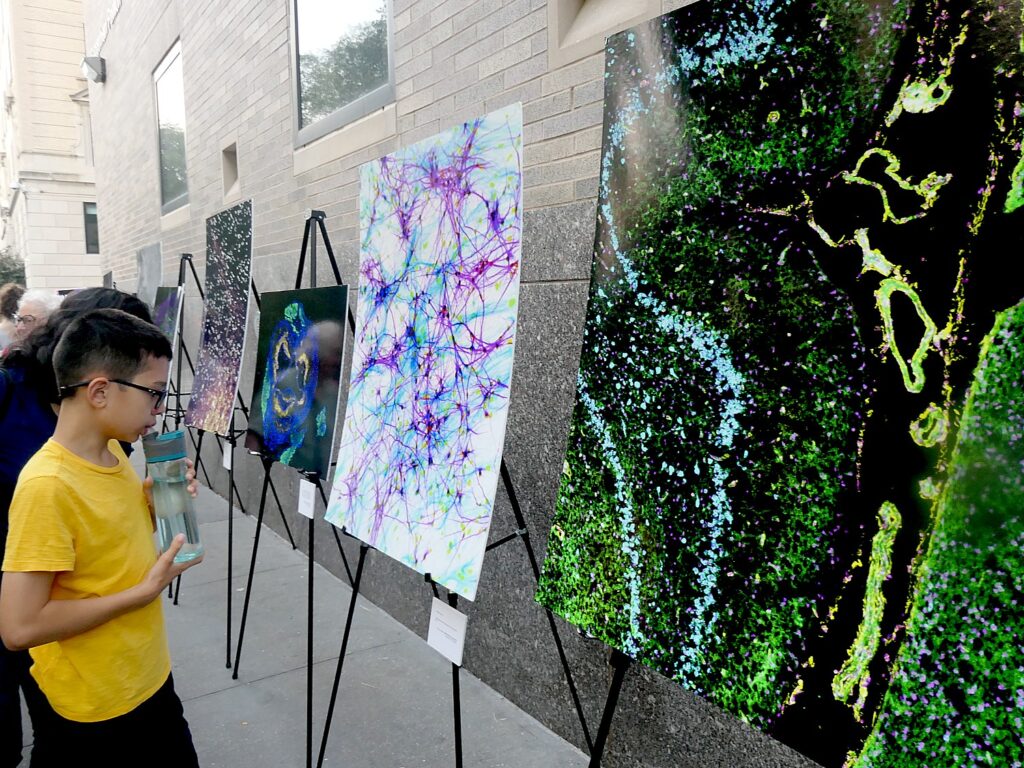

Continuing on, it is fascinating to see how even non-art, non-museum institutions join the festival: there was an ingenious art display “The Art of the Brain,” sponsored by the Friedman Brain Institute, of imaging that is, well, painterly. “Art transports us, engages us, provokes though, summons deep emotions, mirrors experience, and most often, is simply beautiful.”
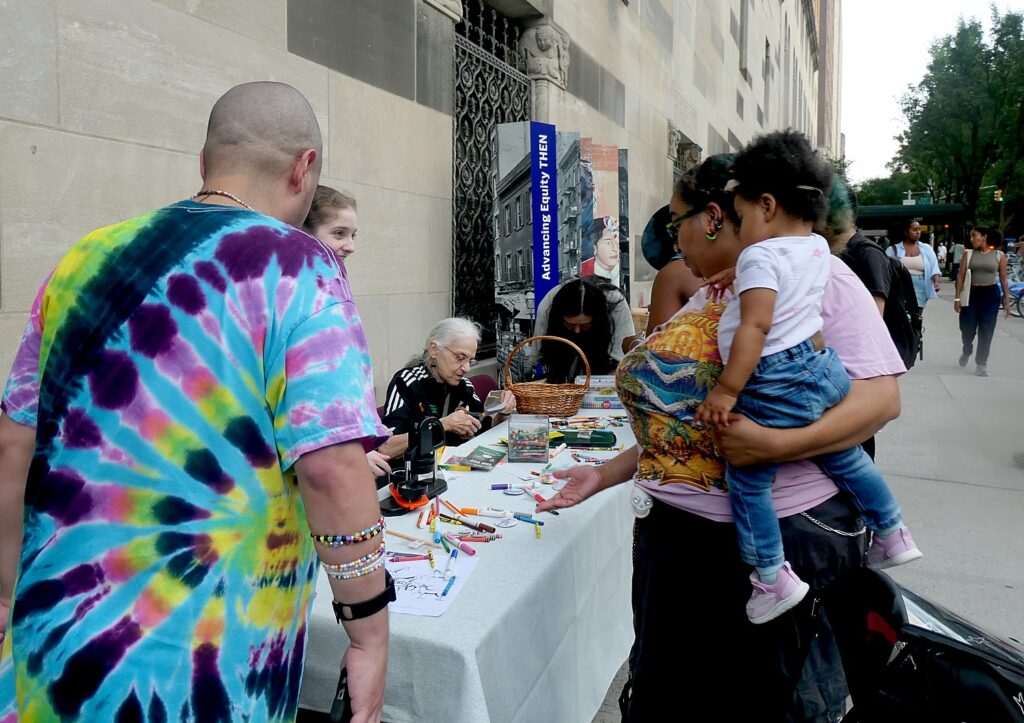
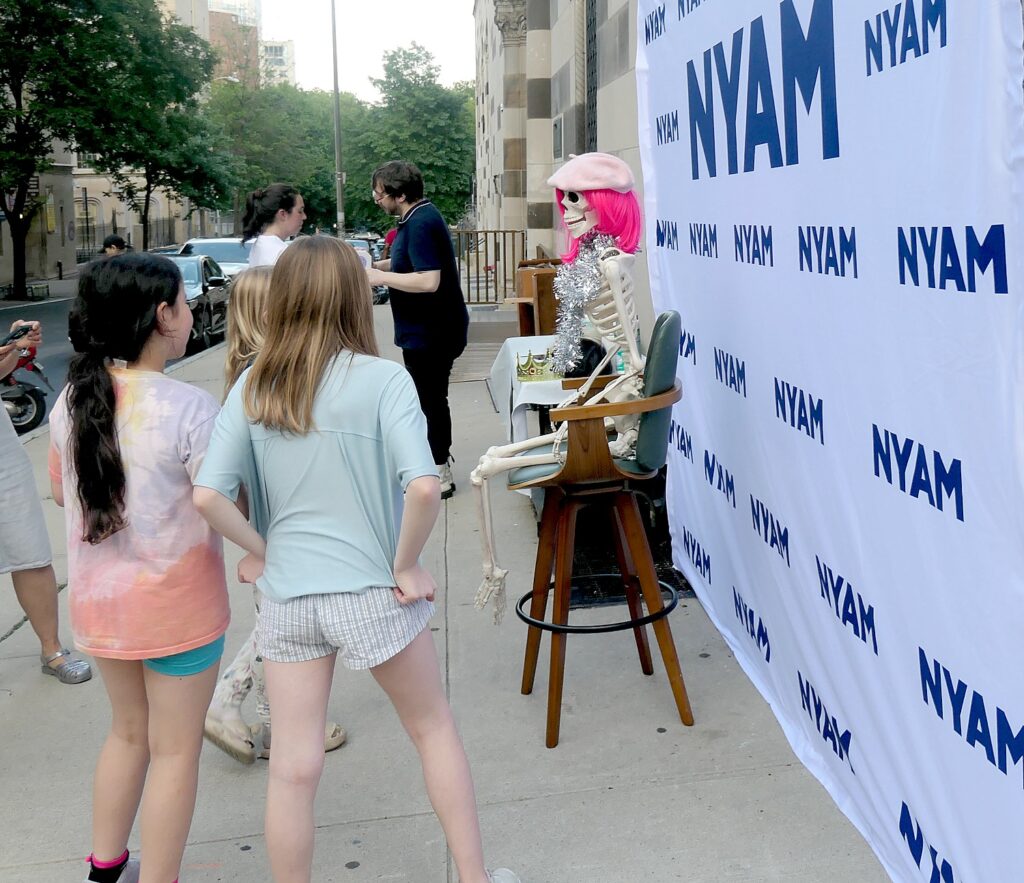
The New York Academy of Medicine the Church of the Heavenly Rest, Asia Society, and AKC Museum of the Dog also joined the celebration, offering fun activities for kids and chalk to make art on the avenue.
But the most fun street happenings happen just outside the Museum of the City of New York – double Dutch rope jumping, dance, music.

But I dare not tarry because the whole festival only lasts three hours.
This year, the highlight exhibit is “New York at Its Core”: Port City (1609-1898” which tells the story of New York’s transformation from a Lenape community of 2,000 people in 1609, to a Dutch trading post of 3,300 in 1660, to the King’s Seaport in 1770 with 39,313 people, to a Merchant City in 1835 after the opening of the Erie Canal, with 334,967 population, already a diverse melting pot, to a Money Metropolis in 1890 with 2,507,414. There is a map presentation that is fascinating, which documents the city during these eras by population density, diversity, and money.
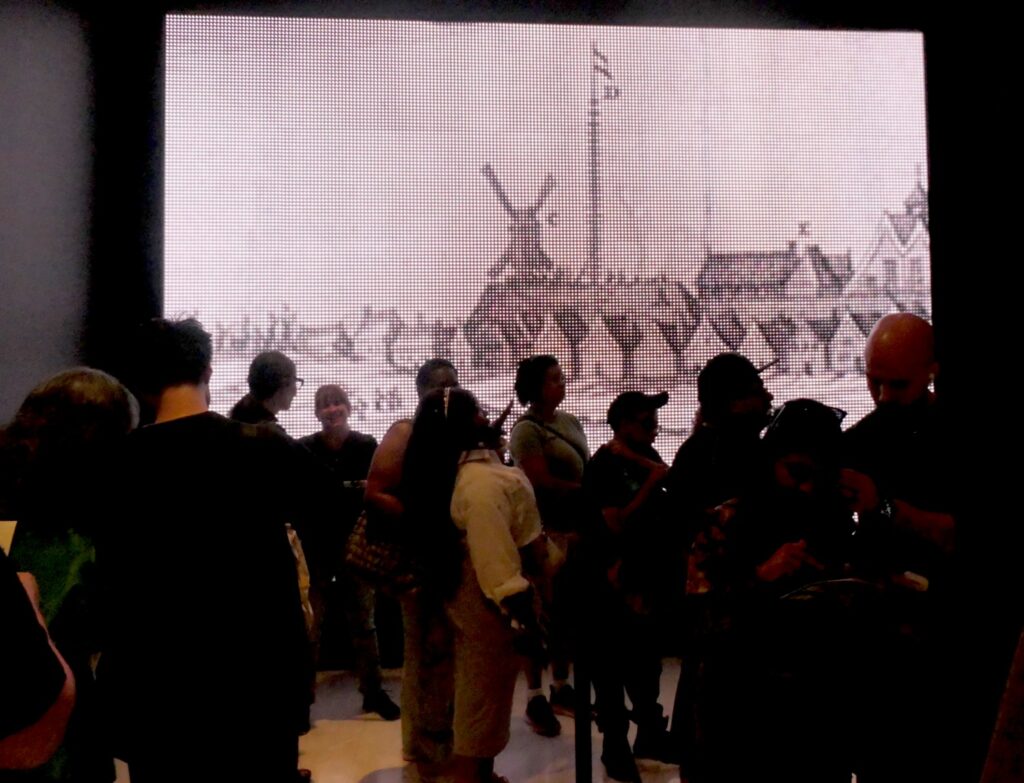
A companion exhibit, World City, 1898-2020 showcases the dizzying evolution of New York as it grew into the modern global metropolis – the constant battle resisting inevitable change, the constant struggle to deal with urban challenges. It makes you think, “The more things change, the more they stay the same.”
I didn’t have time to see one of my favorite exhibits, “Timescapes,” where you watch New York City’s 400-year history unfold in 30 minutes, and “Changing the Face of Democracy, about the life and legacy of Shirley Chisholm, the first Black woman elected to US Congress (closes July 20); “Songs of New York” and “Activist New York.” (See mcny.org, 1220 Fifth Ave. at 103 St, 212-534-1672).
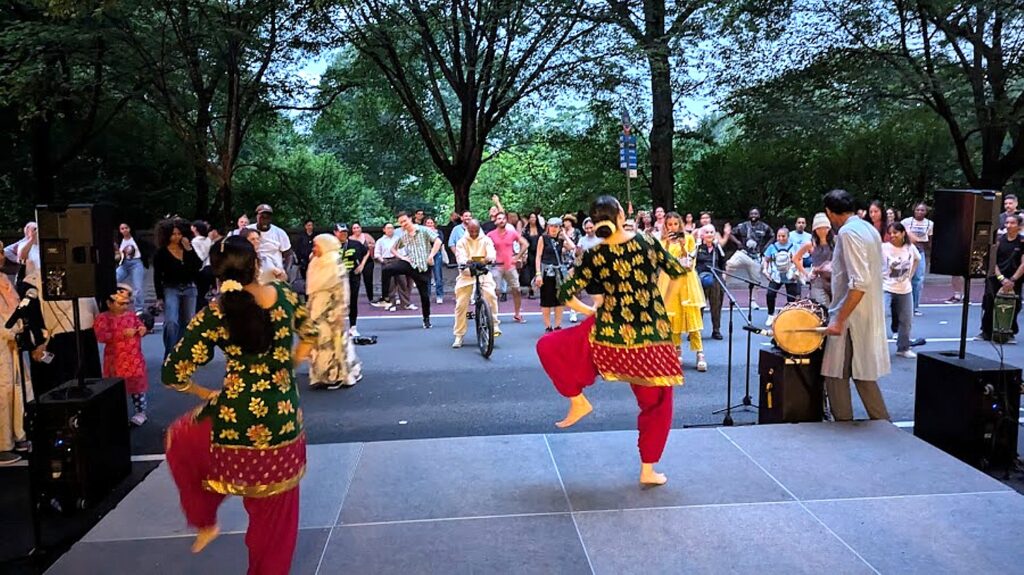
And I never get as far as the El Museo del Barrio (104th St.); and The Africa Center (109th St).
There’s always next year.
See also:
SUMMER IN THE CITY OFFERS CORNUCOPIA OF MOSTLY FREE CULTURAL HAPPENINGS, FESTIVALS, EVENTS
____________________________
© 2025 Travel Features Syndicate, a division of Workstyles, Inc. All rights reserved. Visit goingplacesfarandnear.com and travelwritersmagazine.com/TravelFeaturesSyndicate/. Blogging at goingplacesnearandfar.wordpress.com and moralcompasstravel.info. Visit instagram.com/going_places_far_and_near and instagram.com/bigbackpacktraveler/ Send comments or questions to FamTravLtr@aol.com. Bluesky: @newsphotosfeatures.bsky.social X: @TravelFeatures Threads: @news_and_photo_features ‘Like’ us at facebook.com/NewsPhotoFeatures

